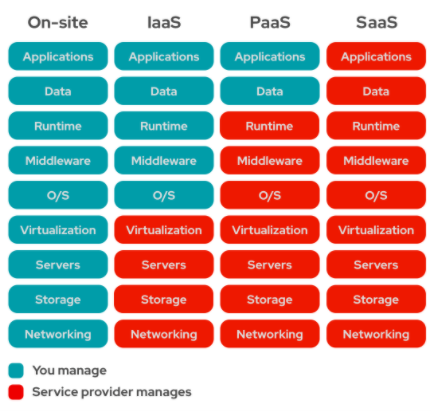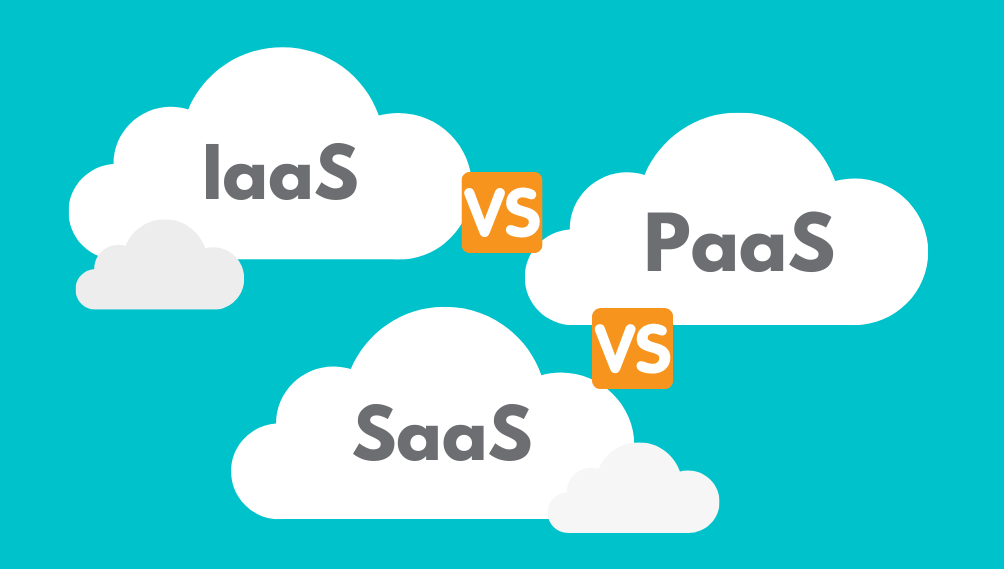If you’re considering moving your business to the cloud, there are many technical terms to get your head around. This blog delves into 3 important acronyms which explain the different cloud computing service models available to you.
- IaaS
- PaaS
- SaaS
Cloud computing is the practice of using a network of different servers that host, store, manage and process data online – in “the cloud”. Unlike on-premise software which is completely managed by you, IaaS, PaaS and SaaS are cloud computing service models that are provided by third parties.
On-premise IT infrastructure presents the biggest level of responsibility to you as a user and manager When your hardware and software are all on-premise, it’s up to you and your team to manage, update and replace each component as needed. What cloud computing allows for is the allocation of one, several or all the parts of your infrastructure to the management of a third party, freeing you up to focus on other things.

IaaS – Infrastructure as a Service
Infrastructure-as-a-Service or IaaS, is a step away from on-premises infrastructure. It’s a pay-as-you-go service where a third party provides you with infrastructure services. IaaS gives users cloud based alternatives to on-remise infrastructure, so businesses can avoid investing in expensive on-site resources. IaaS customers can control their data infrastructure without having to physically manage it on-site.
For example, your business might have access to a hosted server and your hosting provider or dedicated IT company would provide the access to, and the management of the network, server, storage, backups, virtualisation etc. As the user, you are responsible for the operating system and any data, applications, middleware and runtimes.
PaaS – Platform as a Service
Platform-as-a-Service or PaaS is another step further from full, on-premise infrastructure management. It is very similar to IaaS as it most likely provided by the same company, but they manage more and you manage less. Your service provider would therefore handle more components such as your middleware and runtime. The only thing you’re managing if at all is your applications and data.
PaaS is a complete development and deployment environment in the cloud with resources that enable you to deliver everything from simple cloud-based apps to sophisticated, cloud-enabled enterprise applications. Primarily useful for developers and programmers, PaaS allows the user to develop, run and manage their own apps without having to build and maintain the infrastructure or platform usually associated with the process.
SaaS – Software as a Service
Software-as-a-Service or SaaS, also known as cloud application services, is the most comprehensive form of cloud computing services, delivering an entire application that is managed by a provider via a web browser. Think of it as a type of outsourcing – handing over creation, implementation and maintenance of a particular software to the experts so that you can get on with doing what you do best.
Unlike traditional software, where a customer pays once for a perpetual license plus, often fees for maintenance and updates, SaaS ysers pay on a subscription basis for the right to access the software. Other benefits of a SaaS model include:
- Scalable usage
- Lower upfront and ongoing costs
- Automatic updates
- Better collaboration
- Accessible anywhere, anytime
- Security at the highest level
As cloud computing becomes the norm, many businesses are phasing out on-premise software altogether. At the base level, each type of cloud computing leaves you less and less on-premise infrastructure to manage and more time to spend on value adding activities to keep your business prospering.
